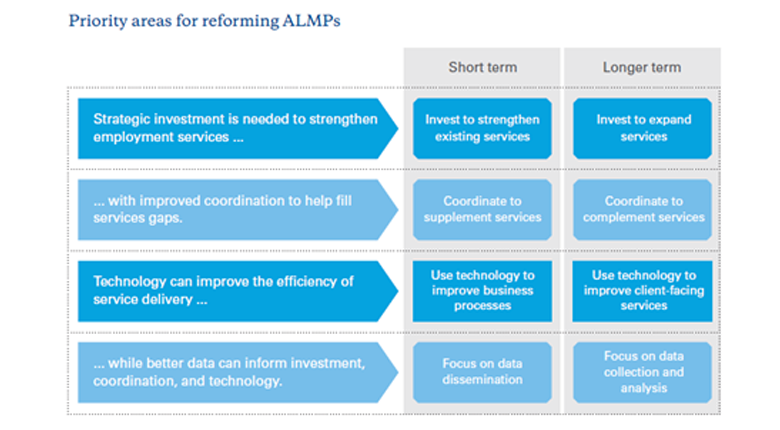Jobs are a key ingredient of Myanmar’s development.
Significant economic reforms in Myanmar have facilitated an economic transformation that has led to job growth that averaged 13 percent annually between 2014 and 2016.
There are now more than 24 million jobs in Myanmar.
These jobs provide a path out of poverty and can bolster social cohesion in a country grappling with ongoing conflict.
Disruptions in supply chains and weak demand due to the COVID-19 have led to factory closings that have put thousands out of work.
Containment measures in Thailand led many thousands of now-jobless Myanmar workers to return home.
One of the five goals in the Myanmar Sustainable Development Plan (2018–2030) is devoted to job creation and private sector–led growth.
4.7 million people, or nearly one in ten people, had moved from their usual place of residence in the five years preceding the 2014 Census, most of them migrants for work.
Much migration flows to Myanmar’s dynamic economic centers, particularly Mandalay and Yangon, as well as beyond Myanmar’s borders to Thailand, Malaysia, and more distant countries.
The benefits of these jobs come in the form of remittances that can reduce poverty, lead to new skills, and shift gender norms.
People on the move face different types of risks than other jobseekers, and so strategies to increase their access to high quality and inclusive jobs in Myanmar must take these risks into account.
Internal and international migrant workers face higher costs to look for jobs, which can deter mobility or lead them to choose informal channels.
Labor Mobility as a Jobs Strategy for Myanmar shows how active labor market policies that aim to generate more and better employment opportunities can be adjusted to the needs of jobseekers on the move.
The report examines these adjustments for different types of active labor market policies.
- Labor market data can be expanded to include information about safety, particularly about avoiding human trafficking.
- Job matching and placement may require both a more active private-sector recruitment industry and more active government oversight.
- Training should incorporate knowledge about the demand from firms overseas, and it may also involve soft skills and safe migration training.
- Financial products can be tailored to alleviate credit constraints based on the remittance-linked income streams of migrants.
Though Labor Mobility as a Jobs Strategy for Myanmar was produced prior to the COVID-19 outbreak, the strategies proposed are only more important now to help create a jobs-led recovery.
The sudden return of international migrants will necessitate strategies to help these returnees access livelihood opportunities in the short term and perhaps migrate again when legal and safe channels reopen.
The Myanmar Sustainable Development Plan includes components related to migration, including a strategy to promote legal, affordable, and secure migration to increase the contribution that migration makes to development.
Labor Mobility as a Jobs Strategy for Myanmar shows how Myanmar’s initial efforts can be expanded through a four-pronged strategy of short- and longer-term actions to deploy strategic investment to strengthen employment services, improve coordination to fill gaps in services, use technology to improve the efficiency of service delivery, and leverage data to inform investment, coordination, and technology.
Undertaking such a strategy would help more people in Myanmar access good jobs.

